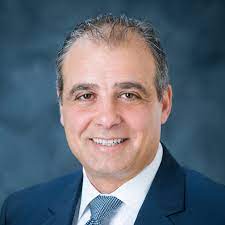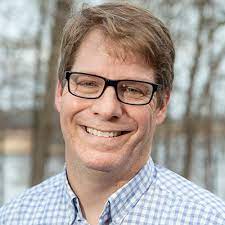Nonprofit Mississippi News CLEVELAND — The country was still reeling after one of the most divisive election in history. In Cleveland, Mississippi, schools were forced to consolidate under a federal desegregation ordinance. But unity was the only focus. “You had people who didn’t want to integrate alongside the all-black kids. There were the black children who refused to live on the [west] side. It happened when the consolidation took place. LaDonne Sterling, a community member, said that the consolidation went so smoothly that she forgot about the weight of the entire world. Sterling was a member the multiracial advisory board during the transition. This panel consisted of approximately 30 people who were appointed as part of U.S. district Judge Debra Brown’s desegregation order. Brown assigned the panel the task of meeting regularly to assist the district in developing implementation strategies and public involvement efforts as part the desegregation plan. This meant that they had to help integrate two cultures and two traditions into one school or community. “We made some recommendations to combine some of the history from both schools into one school so that you don’t lose any of the schools or their individual aspects. The panel facilitator Patrick Davis said that they were able to gather all the artifacts from both schools and bring it down to what they can use [at Delta State University] as a museum of both schools and all the achievements, academic and athletic. Court documents reveal that they were also required to address implementation issues that arose during the 2017-2018 school year. The panel met less often as the summer ended, and eventually stopped meeting altogether. Davis stated that some people were there to resist consolidation, but when they realized they couldn’t succeed they left. Davis stated that “our membership declined mainly because of this.” Others wanted to have a say on who was hired in administrative and coaching roles. Davis stated that once it became clear that they couldn’t make those decisions, they fell off, leaving behind a core group who were “truly invested in moving forward for all the kids.” However, this group eventually dwindled after the first year of the consolidated school. Davis stated that “Unfortunately, we do not have the same group who work and do all the things so many committees were beginning to form at school’s start.” You had booster clubs and your PTAs. The small group of people who were willing to take part was scattered. This was another reason why we couldn’t get back together after we accomplished what they did before school started.” Kierre Rimmer, a former panel member and East Side graduate in 1993, echoed Davis’s sentiments about why he stopped attending meetings. I didn’t have the time to attend all of them, but they were very interesting. Rimmer stated that great ideas were shared. Rimmer said, “I had many other things going on” and that he felt like there were great people who would carry out his mission without me. This dissolution left students in the middle of a transition that gained national attention and sometimes unbecoming. They didn’t have much support when the transition went wrong. Jamie Jacks, the Cleveland School District attorney Jamie Jacks and DOJ attorneys Brown did not respond to requests for comment. Merging two cultures Many students agree that academics, sports, and a four-block schedule are the best ways to consolidate. However, the struggle to merge two cultures into one was a problem for many, mostly former East Side students. East Side was the most African-American high school. Cleveland High was approximately 60 percent African American and 40% white. The new Cleveland High school was created when the two schools were merged. This opened up East Side students to a new environment. This unfamiliarity was emphasized during homecoming week when students were eager to create new traditions and keep some of their old ones. Students from East Side felt that their traditional traditions, such as coronations and pep rallies, were being neglected. They also said they didn’t want to extend the homecoming parade to East Side. The tension created during homecoming week caused by former East Side teacher Katie Byrd noticing that students were unhappy at this time. “There were things we didn’t do in the past that we didn’t do.” Byrd said that although I am very laid back and easy-going, it is important to accept the changes. “I believe that they will be more aware of this next year and bring back some of it. You can’t expect to find exactly the same thing here as you did at East Side. You can have some of it. It’s not all of it. Grierson said, “When you talk about doing a coronation it’s about a couple thousand dollars.” “I encourage parents to get involved. People want to tell us that we aren’t doing that or that. Let’s get the community involved so that we don’t rely on the school to do everything. Davis stated that if the multiracial advisory board had continued to meet regularly, it might have been able to help ease some of the difficulties the new school encountered during its first semester. “Some of these are the things that we could have avoided. The homecoming parade route was not without its challenges. We could have made suggestions to each other and said, “Hey, we’ve had two routes from different parts of town. Davis stated that although it might be uncomfortable and not as convenient, we should find a central location to begin the parade. This will allow us to get involved in both the schools and the neighborhoods. Edward Duvall, who was also on the panel, confirmed what Davis said. He stressed the importance of communication in a time when there is so much change. We missed many opportunities to make a difference. There is a way to create more harmony at school and in our community. Talking and addressing issues is difficult. People lose confidence when they don’t have to talk or when others try to do it behind their backs. So we should have been talking throughout the process, meeting once per month, or once every two months to (ask) what are the problems in our community. What is the topic of discussion among the children? What is the community doing? What are the issues that the community is working on? How can we work together to make it better for everyone? Duvall stated that we did not achieve this. The future is bright for community members, who expressed optimism about their future and were concerned about traditions being destroyed. Rimmer said that he initially had the same concerns that other community members but that he eventually realized that it was selfish to keep these traditions. You want to allow the children of Cleveland Central High School to make their own traditions. Rimmer said that because it is a new school, there should be new traditions. Rimmer said, “Not to throw them away and never be brought back, but to serve as a launching platform for something new…. Let it pass, and let these children create their own traditions, their own memories and their own future. “We just need to be supportive, and be in support and not in the forefront,” students said. Regardless of whether the multiracial panel failed to adequately represent a portion both schools’ populations, they were positive for the future generations that will step into Cleveland Central High. Lortavious Scott, an 11th-grader and former East Side student, said, “I believe it will come together in the future. But right now, we’re both from two schools and students of two different schools are always going to have something to say about it.” Takeria Taylor, an 11th-grader and former East Side student, agreed. She said that two years later, all will be well because the East Side and Cleveland High students will have left and the newer kids will like it as it’s different for them. Davis said the panel was still alive and Jacks, the district attorney, stated in court briefings to Brown that the Cleveland Schools District would work with all parties to make it work again. The most important takeaway from the process is that, even though the community can and has done in the past, it doesn’t want to focus its efforts on remaining divided. It is breaking with the national trend of bitter division, crossing party, race, and cultural lines to bring a community together. This small, rural community, which was praised for its 21st-century desegregation order, has something to offer the rest of America.










